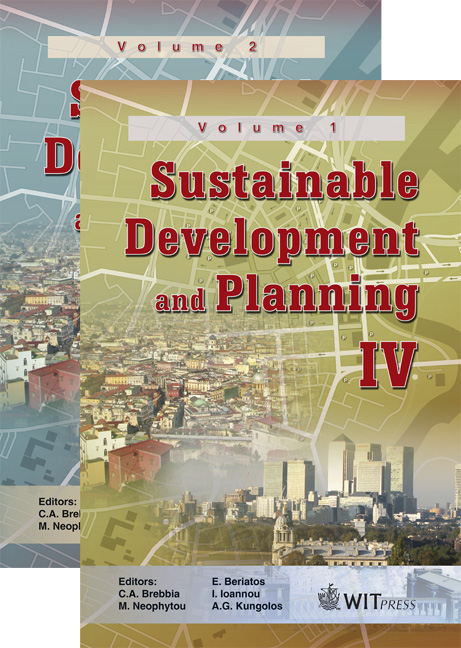Safety Of Users In Road Evacuation: Modelling And DSS For Demand
Price
Free (open access)
Transaction
Volume
120
Pages
10
Page Range
465 - 474
Published
2009
Size
252 kb
Paper DOI
10.2495/SDP090431
Copyright
WIT Press
Author(s)
F. Russo & G. Chilà
Abstract
The SICURO research project was developed by the Laboratory for Transport Systems Analysis (LAST). The project includes demand analysis for transportation system simulation in emergency conditions. Herein we propose the specification and calibration of generation and distribution with modal choice models. Using SP (Stated Preference) and RP (Revealed Preference) surveys. Software for demand model calibration and estimation is described, with some being used for the proposed model experimentation. Keywords: evacuation conditions, calibration, estimation, demand models. 1 Introduction Several mathematical models have been proposed to simulate travel demand, based on different assumptions and that can be subdivided in relation to different elements [1–3]. The behavioural models used mainly belong to the family of discrete choice models. Discrete choice models are usually derived under an assumption of utilitymaximizing behaviour (Random Utility Models, RUM). In relation to the distribution of random residuals, different model specifications can be derived and subdivided into two classes: first class, models characterized by probability expressed in closed form, including the GEV (Generalised Extreme Value) models [4] and their specifications, such as the Multinomial Logit and the Nested Logit models; second class, models founded on simulation, including the Multinomial Probit [5] and Mixed Multinomial Logit models [6]. Generally, these models are estimated by maximizing the likelihood function (for the first class) or the simulated likelihood functions (for the second class).
Keywords
evacuation conditions, calibration, estimation, demand models.





